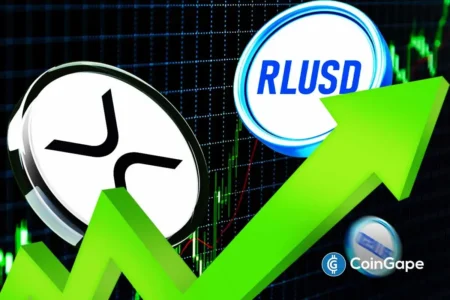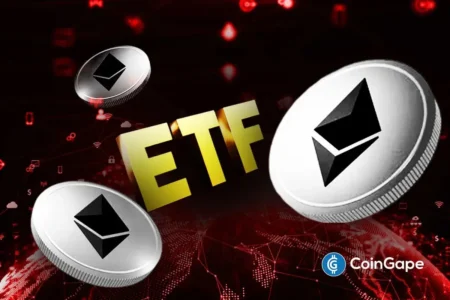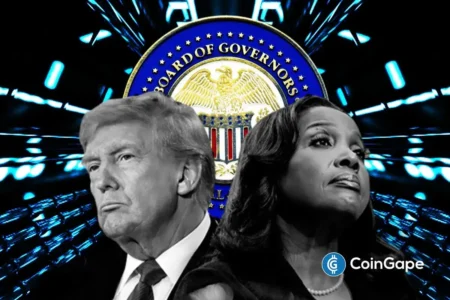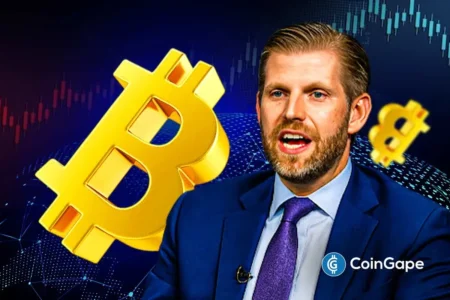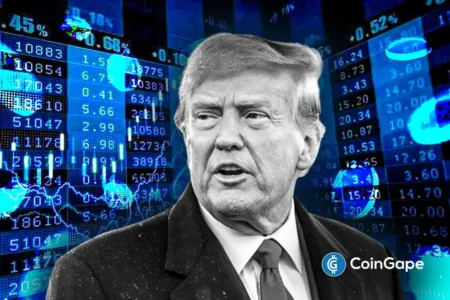Trump’s Tariff Moves: Impact on US-Japan-Korea Trade Relations and Bitcoin Prices
In a significant trade maneuver, former President Donald Trump has reignited discussions surrounding tariffs on Japan and South Korea, announcing his intention to impose a substantial 25% tariff on goods imported from these nations. These moves come as part of his broader vision to address what he perceives as unfair trade practices, targeting crucial trading partners and potentially shaking the foundations of international relations. As the July 9 deadline approaches, the reevaluation of trade dynamics raises concerns, particularly in the cryptocurrency market, where Bitcoin (BTC) prices appear increasingly volatile.
The Tariff Announcement
In recent posts on Truth Social, Trump emphasized the detrimental effects of existing trade agreements, criticizing them for contributing to persistent trade deficits for the United States. His assertions signal a renewed commitment to what he refers to as "Liberation Day," echoing past policies aimed at realigning trade to better favor American interests. By targeting Japan and South Korea, two of the U.S.’s key allies in Asia, Trump’s tariffs could lead to substantial friction in diplomatic relations, especially if these countries respond with their own retaliatory measures.
Bitcoin’s Reaction
Almost immediately following the tariff announcements, Bitcoin’s price experienced a notable drop, with the cryptocurrency hovering precariously just above the psychologically significant level of $108,000. According to CoinMarketCap, the flagship cryptocurrency faced heightened selling pressure in anticipation of the tariffs, bringing to light the integral relationship between government policy and crypto market stability. Bitcoin’s earlier responses to tariff threats demonstrate a consistent pattern of volatility that traders must navigate carefully.
Historical Context of Tariffs and Crypto
Historically, Trump’s trade policies have induced substantial market reactions, especially where cryptocurrencies are concerned. In April, amid the initial tariff announcements, Bitcoin’s value plummeted to around $78,000, only to later recover to an all-time high of $68,000 in May. Such peaks and troughs underline the sensitivity of the cryptocurrency market to geopolitical developments, showcasing the intricate web connecting traditional finance, innovative financial technologies, and international trade policies.
Potential Future Developments
Looking ahead, the potential for escalating trade tensions looms large, especially as Trump has indicated he could impose tariffs as high as 70% on certain countries if retaliatory actions occur. This ambiguous stance places not just Japan and South Korea at risk but also larger economic entities like India and the European Union that may face similar tariffs in the future. The uncertainty surrounding these developments could prompt traders and investors to reconsider their positions in both traditional and digital asset markets.
Market Sentiment and Broader Implications
The market’s response to these tariff announcements indicates a broader sentiment of caution amongst investors. As Bitcoin and other digital assets are heavily influenced by external factors, the impending July 9 deadline brings additional scrutiny over how trade disputes could further affect trade balances and, consequently, crypto valuations. While some investors may view this as a buying opportunity, others remain wary of the potential fallout from an all-out trade war.
Conclusion
In conclusion, Trump’s renewed focus on tariff imposition against Japan and South Korea is not just a matter of domestic trade policy but a pivotal event with far-reaching consequences for international relations and the cryptocurrency market. As Bitcoin teeters on the brink of significant price fluctuations, the developments surrounding these tariffs will continue to be crucial for investors navigating both traditional and digital asset landscapes. Moving forward, understanding the interplay between trade policy and market dynamics will be vital for anyone engaged in the crypto space and beyond.
By analyzing the current economic landscape shaped by these tariffs, stakeholders can better prepare for the challenges and opportunities that lie ahead in an interconnected global economy.










